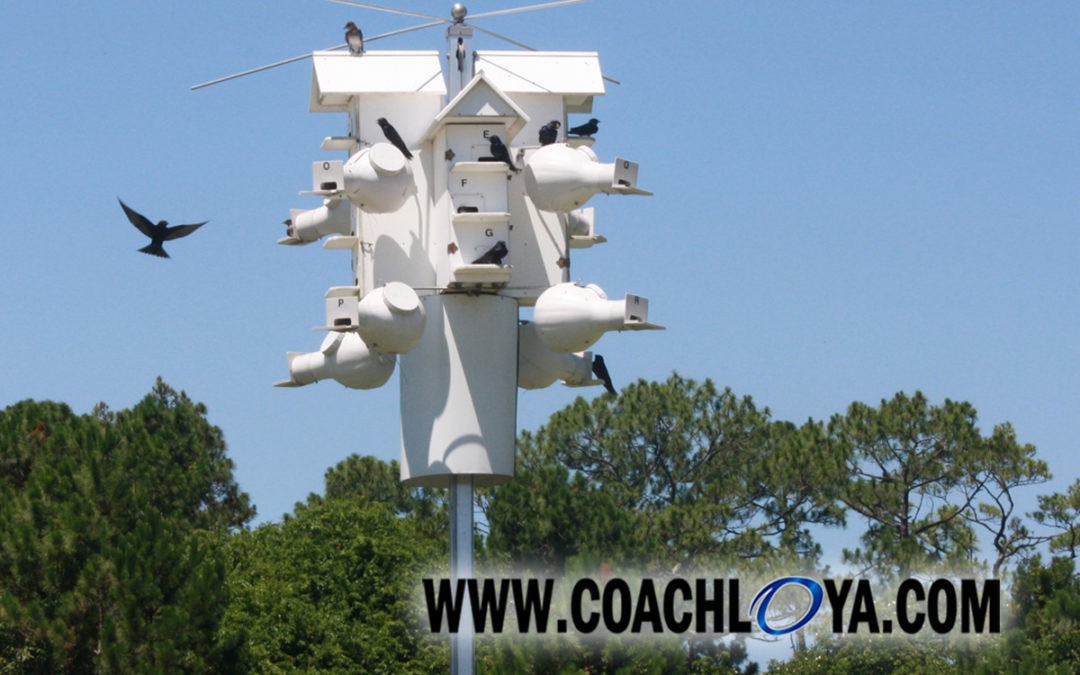Nature is a marvelous teacher. So many great lessons about teamwork can be learned by observing wildlife interactions. I recently witnessed an encounter between a “team” of purple martins and a much larger predator that demonstrated an important good-teammate trait.
Purple martins are migratory swallows. These tiny birds make the more than 6,000 mile trek from Brazil to Canada every year. As they journey north, the purple martins stop in central Florida to nest for a few weeks between late January and early June.
About 20 years ago, Disney World began erecting purple martin birdhouses around its properties, as the birds are not only fascinating to watch but also helpful with insect control.
Disney partnered with Microsoft in 2018 to design smart birdhouses—gourd-shaped enclosures specially equipped with environmental sensors and HD cameras. The objective was to study the birds’ “secret lives.”
As I have previously written, I live near Disney World. My neighbor is a Disney Conservation cast member, and he set up a purple martin birdhouse in our neighborhood. I was walking by it the other day when a much larger hawk tried to access the nests.
What ensued was a display of aerial combat like I had never before seen.
Dozens of purple martins swarmed the hawk. Though considerably smaller, the purple martins were relentless in their defense. They attacked the hawk from every imaginable angle. No matter what path the hawk took, the purple martins blocked it.
In defending their birdhouse, the purple martins proved the merits of there being strength in numbers. The hawk was bigger, stronger, and faster than any single purple martin. But he was no match for them all working together.
The “strength in numbers” advantage only applies if each member of the team is fully committed. If at any time, the members become fearful and revert to self-preservation, the advantage is immediately negated.
Had one of the purple martins caved to fear, the hawk would have exploited the opening and broken through the defense. But like good teammates, the purple martins held firm.
Good teammates resist the natural urge to revert to self-preservation. They don’t give in nor give up, even when those options seem to be the safer, more logical choice. By remaining faithful and courageous, they don’t succumb to the reality of their individual inferiority.
When the hawk finally flew away, the purple martins nonchalantly returned to their prior behaviors. In doing so, they demonstrated another noble good-teammate trait: humility.
They did their jobs without boasting, posturing, or fanfare. They worked together because that’s what their team expected of them. The purple martins unwaveringly put “we” in front “me.”
As always…Good teammates care. Good teammates share. Good teammates listen. Go be a good teammate.





